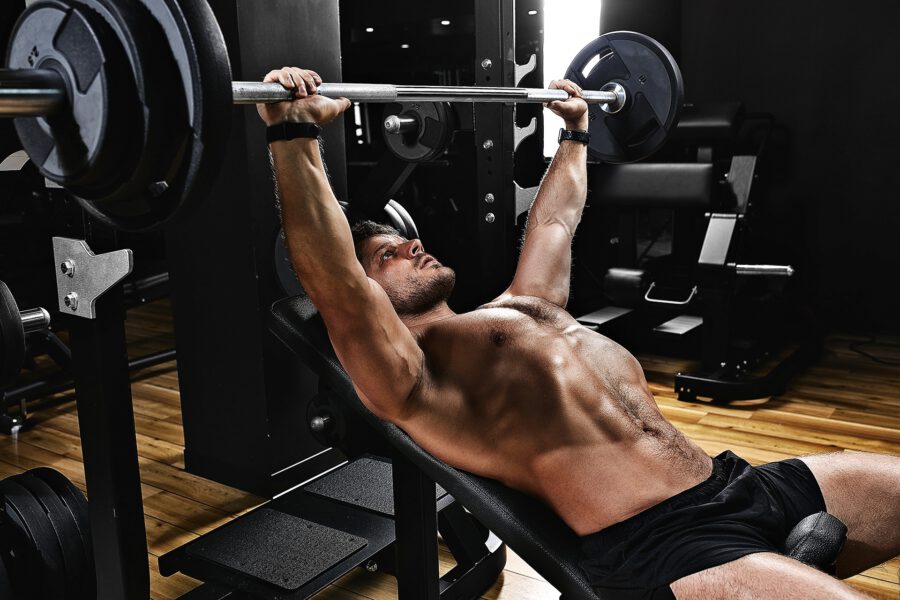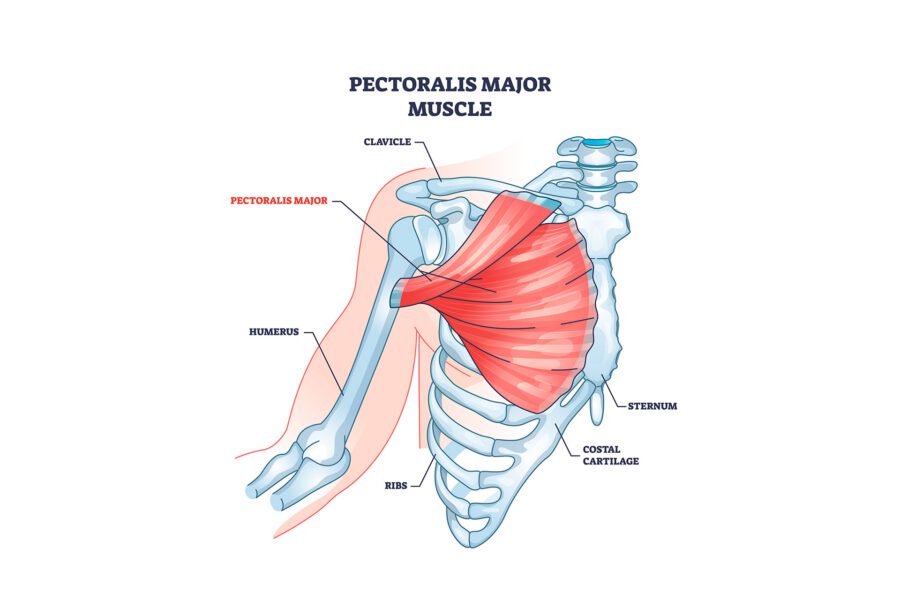3 Best and Worst Chest Exercises for Strong Pectoral Muscles
The chest, or pectoral muscles, is vital for upper body strength, aesthetics, and overall stability. A well-developed chest enhances the physique by creating a fuller, more muscular upper body, contributing to the classic V-taper look that highlights the shoulders, back, and waist.
Whether you are a man or a woman, well-developed chest muscles can enhance your appearance by adding symmetry and balance to your upper body. A well-sculpted chest creates a strong, confident look while contributing to functional strength, which translates into improved performance in various sports and everyday tasks, such as pushing, lifting, and maintaining good posture.
This article will guide you through the best and worst chest exercises to help you achieve balanced muscle development and avoid common pitfalls.
The chest is primarily composed of two muscles: the pectoralis major and pectoralis minor. These muscles work together to control various movements of the arms and shoulders, such as pushing and lifting.
This is the larger of the two muscles, responsible for the bulk of the chest’s size. It covers the upper and middle parts of the chest and is crucial for shoulder adduction, flexion, and internal rotation.
However, the pectoralis major is further divided into distinct regions, commonly referred to as heads: the clavicular head (upper chest), sternal head (mid-chest), and costal head (lower chest). Each head requires specific exercises to develop and balance the chest fully.
Located beneath the pectoralis major, this smaller muscle supports the shoulder blade and aids in shoulder and arm movements.
To build a well-rounded chest, both muscles must be targeted effectively. Most chest exercises target both the pectoralis major and minor. The quality of exercise just depends on their ability to provide a stimulus for muscle growth.
Just like the legendary Arnold Schwarzenegger’s chest workout, you have to focus on the fundamentals of muscle building when designing your chest workouts.
So we’ve chosen the best exercises based on their ability to engage the chest muscles effectively, maximize the range of motion, provide stretch and constant tension, and allow progressive overload.
This portion of the pectoralis major originates from the collarbone and helps lift the arms upward. Targeting this head is essential for achieving a well-rounded upper chest and preventing the chest from looking "bottom-heavy."
The guillotine press involves lowering the barbell to the neck, which places the shoulders in an extremely vulnerable position. While this exercise does provide a deep stretch to the pecs, the risk of shoulder impingement and potential neck injury is too high to justify its use.
This is especially dangerous for lifters who lack shoulder mobility or have a history of shoulder issues. It is not safe for beginners and is still risky even for experienced lifters. Despite its potential benefits for stretching the chest, the injury risks outweigh the rewards.
A safer and more effective variation of this exercise is using a dumbbell instead of a barbell.
The dumbbell guillotine press is a variation of the flat bench press in which the arms are flared out, and the weight is lowered to the neck area. This variation increases the stretch in the pecs, particularly the upper chest, allowing for better isolation.
The incline barbell press is performed on an incline bench set at about 30 to 45 degrees. The barbell is pressed from the upper chest toward the ceiling, engaging the clavicular head of the pectorals.
The incline barbell press is one of the most effective exercises for targeting the upper chest. The incline angle shifts the emphasis from the middle and lower pectorals to the upper portion, allowing for a more focused contraction of the clavicular head.
Additionally, the barbell allows for easy weight progression, facilitating overload and muscle growth over time. Since the shoulders remain safer and more neutral during the movement, this exercise offers great hypertrophic potential without exposing the joints to unnecessary risk.
Other great exercises for the upper chest
The sternal head is the largest part of the chest and is responsible for the overall mass and strength. It is primarily engaged during horizontal pushing movements, such as bench pressing.
The hex press, where you press two dumbbells together in a neutral grip, is often mistaken for an effective chest exercise. However, it limits the stretch of the pecs because your arms stay close to your body, minimizing the activation of the chest muscles.
Additionally, the triceps tend to take over during the movement, reducing tension on the pecs. Due to the lack of proper stretch and tension, this exercise ranks as one of the worst for chest development.
The machine chest press ticks all the essential boxes needed to promote hypertrophy and develop a fuller chest and wider shoulders. It provides a deep stretch in the pecs during the negatives and constant tension throughout the movement. More importantly, it allows lifters to easily load weights while allowing them to push to failure safely.
The machine keeps you stable and focused more on the actual movement than worrying about your safety during heavy lifting. This enhances the mind-muscle connection and allows you to overload the chest muscles without the risk associated with free weights.
Overall, this exercise should be a staple part of beginner workout routines and advanced lifters alike.
Other great mid-chest exercises:
Here’s a plan for men that will help you build a strong body along with defined chest muscles:
And for women:
The lower portion of the pectoralis major, or costal head, plays a crucial role in pushing movements that involve a downward angle. This head is responsible for giving the chest a well-defined, sculpted lower region.
The cross body standing dumbbell fly is a suboptimal exercise for the lower chest due to several factors. The poor stability inherent in the standing position and the inconsistent tension applied to the lower chest tend to shift the emphasis away from the target area and more toward the front deltoids and upper chest.
Furthermore, using a dumbbell in a standing position presents challenges for safe, progressive overload. It's difficult to increase the weight used in this exercise without compromising form or safety, which is problematic for long-term strength and muscle development.
If you are more of a calisthenic guy, then you’ll definitely love the chest dips. This exercise is an example of a great compound movement that allows deep stretch on the pecs during the negative, which maximizes tension and range of motion, especially when you lean forward slightly during the movement.
To effectively overload dips, you can add a weighted belt or increase the number of reps. However, this exercise is not beginner-friendly. Foundational strength and optimal mobility of the shoulder joint is necessary to avoid shoulder discomfort when performing this exercise.
Other great chest exercises:
To maximize muscle growth, it’s essential to choose exercises that provide a deep stretch and consistent tension throughout the range and allow for progressive overload. Some exercises might be too hard or unfamiliar to you now, and that’s perfectly fine.
Remember not to rush the process. Fitness and your goals take time, but it will all be worth it. Consistency and progressive overload are the keys to long-term success in chest development.



